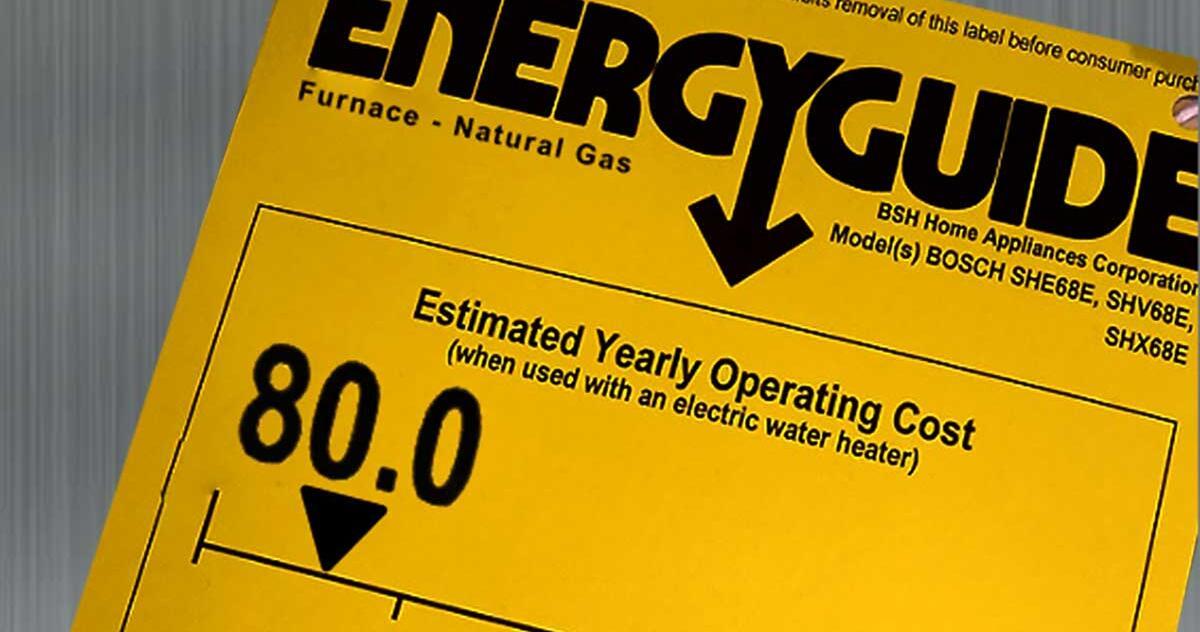
What Is The AFUE Rating Vs. Standard Efficiency Furnaces?
WHAT DOES AFUE STAND FOR?
AFUE measures how efficiently a heater converts energy from fuels into usable heating. It determines how much energy your heater uses to produce the desired warmth.
A higher AFUE rating means the system is more efficient at converting fuel into usable energy. Choosing a high AFUE-rated heating system is important for a homeowner because it's better for the environment, the house, and the wallet.

HOW IS AN AFUE RATING CALCULATED?
To figure out the AFUE rating, HVAC professionals use this calculation:
An AFUE rating is calculated by dividing the total annual heat produced by the furnace by the total annual energy consumed by the furnace. For example, if a furnace produces 10 million BTUs annually and consumes 12 million BTU’S, its AFUE would be 88%. They divide their total heating output (in megawatts) by 100 million British Thermal Units (BTU), then multiply by 100. We'll then go through some examples so you can see what those numbers mean.
WHAT IS A GOOD AFUE RATING?
Understanding AFUE ratings help you to understand how a furnace works. A furnace uses a fuel, like propane or natural gases, to produce heat from start to finish for your house.
If your furnace has a low AFUE (Annual Fuel Utilization Efficiency) score, you may consider replacing it with a new one. However, keep in minder that heat loss from your ducting isn't considered when calculating your AFUE score. So if your ducting is damaged or not properly sealed, your AFUE might drop even further.
To be a bit more technical, AFUE (Annual Fuel Utilization Efficiency) is the furnaces' annual heat output ratio compared to their total annual energy input.
According to Energy.Gov, a high-efficient furnace has an AFUE (Annual Fuel Utilization Effectiveness) of at least 90 percent; a mid-efficient furnace has an average AFUE of between 80 percent and 83 percent, and any AFUE below 80 percent is considered a low-efficient furnace.
Your system's AFUE rating is displayed on the Energy Guide sticker on your unit. Read your owner's manual for the AFUE rating if you can't find the Energy Guide sticker.
Standard Efficiency Furnaces
WHAT IS A STANDARD EFFICIENCY FURNACE?
A standard efficiency furnace provides 80% annual fuel utilization efficiency (AFUE). In this furnace, 20% of the energy produced by natural gas is expelled as exhaust. High-efficiency furnaces offer 90% or more AFUE. These days, 95% AFUE is a standard rating among new gas-powered furnaces.
HOW TO DETERMINE IF YOU HAVE A HIGH-EFFICIENCY HEATING SYSTEM
All manufacturers are required to display the AFUE on boilers and furnaces. Look for a bright yellow label on the outside of the furnace. It should display the AFUE and indicate whether it's high efficiency. You can look up the model number online to learn the AFUE if the label is missing or damaged. You can also look at the furnace's layout to determine its high efficiency. Here's how:
If the furnace vents to the chimney or roof via a metal flue, it's standard efficiency. If the furnace has a pair of PVC pipes acting as draw and vent, that's a sign of sealed combustion, meaning it's high-efficiency.
What Is The AFUE Rating Vs. Standard Efficiency Furnaces?
So as you can see, the AFUE is a rating system, and a standard efficiency furnace is a system that AFUE is grading! You can not compare the two; however, any furnace that scores an 80% or higher is good!


